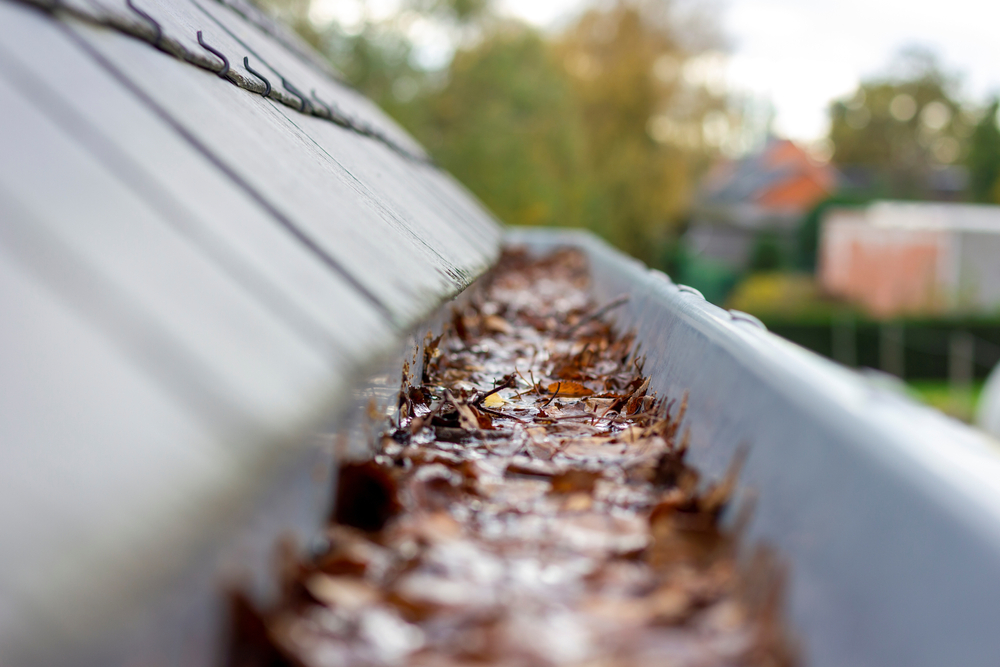Improper water drainage poses significant risks to a property’s structural integrity, impacting both its foundation and the condition of interior walls. Improper water drainage is also a contributing factor in basement flooding and roof rot. Water damage that is not remediated in a timely manner can also lead to mold growth. Ensuring the proper flow of water in and around a property can prevent catastrophic damage. Share the following information with your investor clients to help them avoid water woes this fall.
Water Issues: Above Ground
Keeping a property’s top weather barrier in shape can help eliminate the risk of water damage inside the property.
Roof & Attic
Using binoculars is a safe way to get a preliminary view of the roof’s condition. If the roof has a steep pitch, the investor client may want to call a professional for an assessment. They should look for nail pops, broken or worn-out shingles, and wood rot. If there are just a few shingles that are curling, buckling, or cracking, your investor client may be able to replace them, but if there is a lot of damage, it may be time for a new roof! It is also important to check the flashing around skylights, pipes, and chimneys for gaps or leaks.
The underside of the roof will need to be examined, too. Your investor clients should look for sagging areas and stains or dark spots, which could indicate an ongoing leak, and check that light isn’t peeking through. Other potential indicators of roof trouble are cracked paint, wall discoloration, or peeling wallpaper throughout the property’s interior.
Gutters
Gutters and downspouts need to be cleaned regularly – and even more often once trees start to shed their leaves. All property water drainage areas should be clear of leaves and debris. Once visible buildup has been removed, flushing the gutter with a garden hose or bucket of water can help the investor client check the flow. Downspouts at the bottom of the gutter system should be at least 3 feet long to direct water away from the foundation. When checking downspouts, investors will want to look at the grading near the property’s foundation, too. According to the International Code Council, a lot’s grade should fall a minimum of 6 inches within the first 10 feet away from the foundation.
Water Issues: Ground Level
Foundation
In the summer months, the ground can get pretty dry. Even if your investor client started with the perfect slope to shed water away, a dehydrated lawn can pull away from the foundation, causing settling issues, cracking, and even flooding when the area finally does receive a good rain. When the soil rehydrates, it expands and doesn’t always lift the foundation evenly, which can cause sloping floors, windows, and doors to fit improperly and maybe even broken pipes.
Properly planting shrubs and flowers around the base of the foundation can help retain moisture while also shading the area to keep it from drying out. Watering the foundation is perhaps the most effective method for alleviating damaging drought conditions. If your investor clients notice any signs of foundation issues, they should call in a foundation repair specialist to assess the damage immediately. Foundation issues only worsen over time, and as you know, repair costs are often excluded by property insurance.
Garden Hoses, Sprinklers, and Outside Faucets
If your clients invest in locations where temperatures drop below freezing, they’ll want to turn off valves to exterior hose bibs and drain the pipes until empty to prevent them from bursting. If they have an in-ground irrigation system, it will need the same attention. Garden hoses and sprinklers should also be drained and put away. To save energy and prevent freezing, your investor clients can wrap water pipes that run along exterior walls with heating tape.
Pools
Pools must be winterized properly. If your investor client has never winterized a pool, they may want to call in a professional. Ensuring that the pool cover is properly secured will not only keep debris and animals out but is also important to prevent accidental injuries.
Plumbing Systems of Vacant Properties
VERY IMPORTANT – At vacant properties, your investor clients should turn off the water and fully drain plumbing systems. Thieves can cause extensive water damage when they break in and remove copper pipes or other valuable plumbing fixtures. They may only get $200 worth of copper, but damage could easily cost the investor client $10,000 or more in repairs.
Water Issues: Below Ground
One of the biggest problems with extended heavy rainfall is the backup of sewer drains. Though spring is the typical time to address concerns with sewer lines and septic tanks, ongoing attention to these areas can help your investor clients keep a dry basement during summer storms, protecting the HVAC system and water heater.
Sewer System & Sump Pumps
A sump pump is only useful if it’s in working condition, so it’s important to keep them well-maintained! Your investor client should set a regular schedule to remove accumulated dirt and debris and ensure that float and check valves are both moving freely. Portable pumps should be positioned in the lowest part of the basement and connected to a power source. To test the sump pump, the investor client can pour a bucket of water into the sump pit and ensure the water is pumped out and away from the property; it shouldn’t pool in uneven terrain or run back toward the foundation.
Window Wells
If the property has below-grade basement windows, installing window well covers can help keep out rain, leaves, and pests. Choosing a clear acrylic cover will allow light to enter. But your investor clients will want to be sure they fasten securely to the home’s foundation.
A lot goes into keeping a property in good condition, especially when it comes to water drainage. To make it easier, we have summarized our top maintenance items in this Fall Maintenance Checklist for your investor clients.





